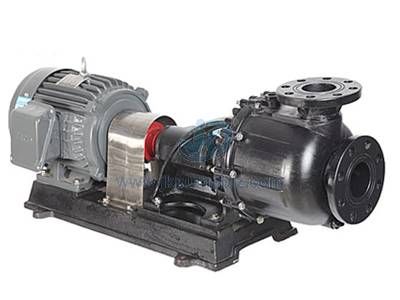The Difference Between Centrifugal Pump and Self-Priming Pump
The main reason is that the inlet pipe of the Self Priming Of Pump does not need to be installed with a bottom valve, and the water can be sucked up after being filled with water for the first time, and there is no need to add water in the future. The water diversion has the function of self-priming for life, and the centrifugal pump plays the role of pressurization, the liquid level must be higher than the pump, and it can only start when it can flow into the pump body.
If the liquid level is lower than that of the centrifugal pump, you can only install a bottom valve at the suction port of the inlet pipe to fill the pump and the pipe with liquid to achieve the self-priming function, or install a water diversion tube at the inlet, such as a centrifugal pump that does not work for a long time. At the second start-up, the water in the inlet pipe and the pump body is basically gone, and it needs to be filled with water again. The operation is more troublesome, because the centrifugal pump inlet bottom valve seal that is not used for a long time cannot achieve a complete sealing effect. Slowly leaks back to the pool, so in conditions that require self-priming, self-priming pumps are more effective than centrifugal pumps.

Self Priming Of Pump
Self-priming centrifugal pumps all adopt the pump body structure with axial liquid return. The centrifugal pump body is composed of a suction chamber, a liquid storage chamber, a scroll chamber, a liquid return hole, a gas-liquid separation chamber, etc. After the Centrifugal Pump starts normally, the impeller sucks the liquid stored in the suction chamber and the air in the suction pipe together, and The impeller is completely mixed. Under the action of centrifugal force, the liquid entrains the gas to flow to the outer edge of the scroll, forming a certain thickness of white foam belt and high-speed rotating liquid ring on the outer edge of the impeller. The gas-liquid mixture enters the gas separation chamber through the diffuser.
At this time, due to the sudden decrease of the flow rate, the lighter gas is separated from the mixed liquid, and the gas continues to rise and discharge through the outlet of the pump body. The degassed liquid returns to the liquid storage chamber, enters the impeller again through the return hole, mixes with the gas sucked in from the suction pipe inside the impeller, and flows to the outer edge of the impeller under the action of the high-speed rotating impeller. As this process goes on again and again, the air in the suction pipe continues to decrease until the air is exhausted, the self-priming pump completes the self-priming process, and the centrifugal pump is put into normal operation. Because the centrifugal pump has this unique exhaust ability, the self-priming pump can transport liquids containing gas without installing a bottom valve, and has a good stripping function when used on a cruise ship.
To purchase, please contact the Self-Priming Pump Manufacturer









